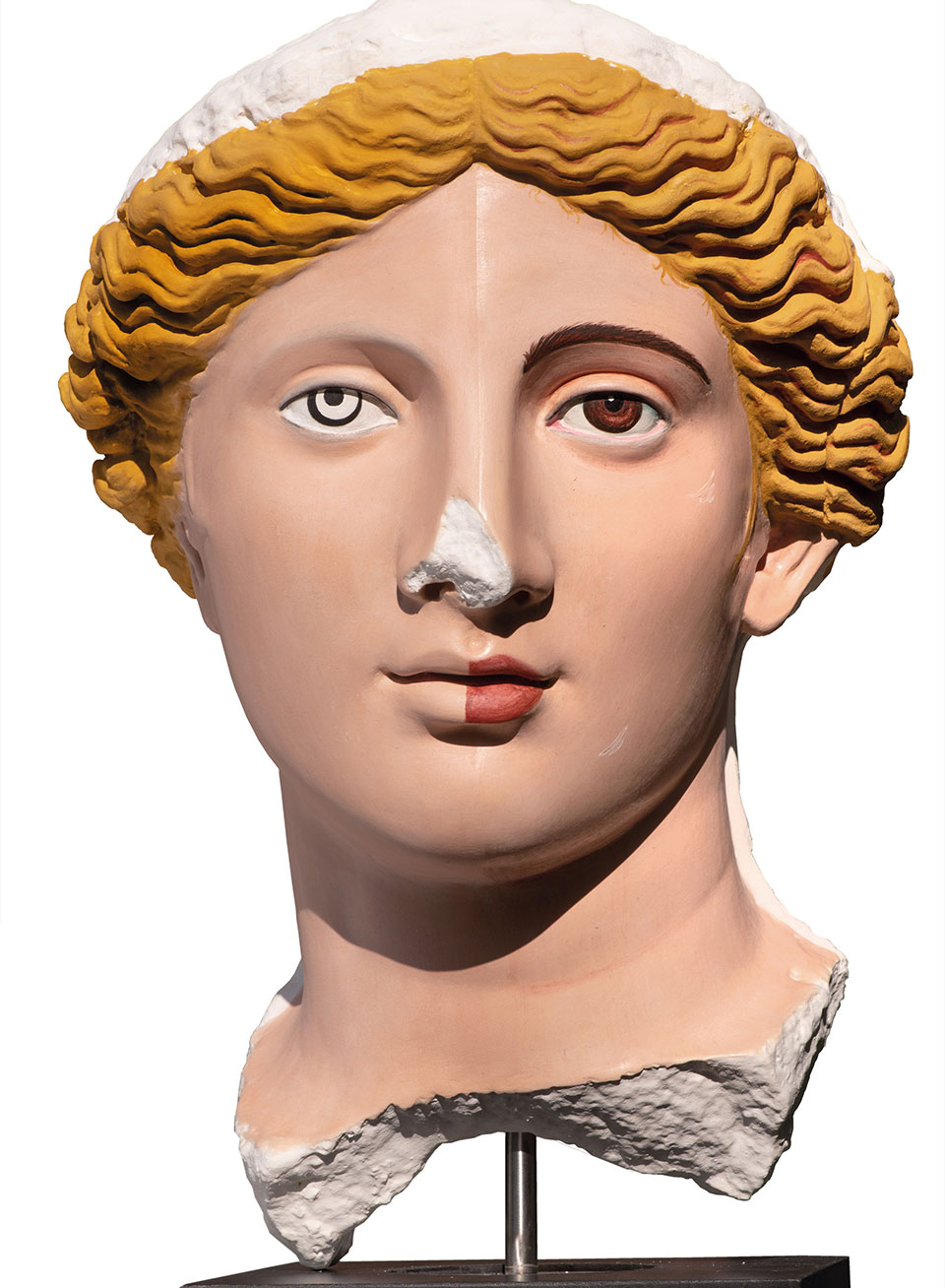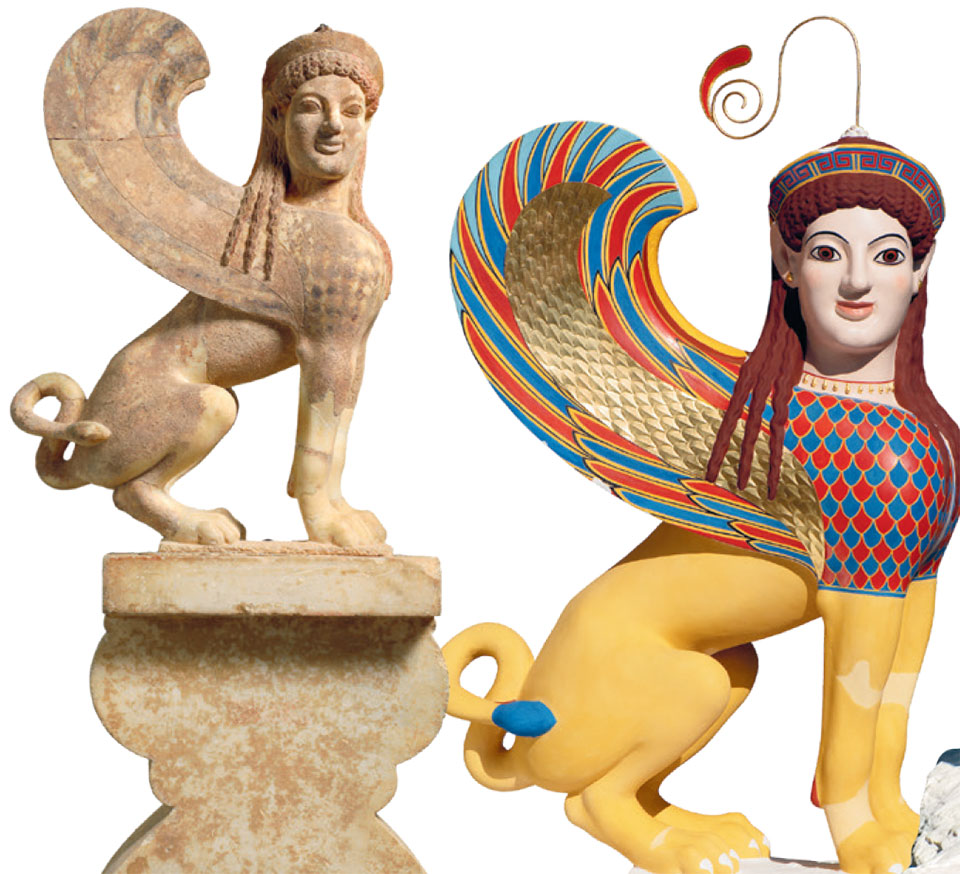
“Of course, the result cannot be exactly the same as the original sculpture at the time, mainly due to the technique used at the time to repaint. But I think this exhibition is very interesting because it introduces us to the world of Greek antiquity in a different way,” says Nikos Kalcas, scientific director of the Museum of Cycladic Art.
Sculptures that are not all white, statues with colored clothes, eyes, lips and hair. “Possible;” we ask him. “I admit that this sight frightens them, but it really was so,” he replies. “Ancient sculptors represented the image of the face they saw, and there were even special masters, such as, for example, a certain Nikias, who was engaged exclusively in painting marble sculptures.”

The conversation with the eminent archaeologist took place on the occasion of a recent exhibition titled “Chrome: Ancient Sculpture in Color” presented at the Metropolitan Museum of Art (The Met) in New York by German archaeologists Vincens and Ulrika Koch-Brickmann. It is this exhibition that has become the subject of controversy in the US metropolitan area, as it is impressive, but also divisive in terms of the aesthetic value of the exhibits.
In Greece, we tried the world-famous Brickman collection, which includes casts of famous sculptures from Greek and Roman antiquity, in which polychrome has been restored. This is the result of many years of research work by two archaeologists who have dedicated their careers to recreating the lost colors of antiquity, dispelling the myth of the whiteness of classical marble sculpture.
“However we do it, color is an element of life force, and this was characteristic of the ancient Greek culture,” says Mr. Kaltzas.
An exhibition held at the National Archaeological Museum in 2007, during Mr. Calza’s reign, was called “The Gods of Color” and “despite aesthetic differences, was didactic,” he stresses. “However we do it, color is an element of life force, and this was characteristic of ancient Greek culture,” he continues. “A statue with its eyes closed because they are now white was an unimaginable state for the ancients. For the artist of that time, the form had to appear alive. Particular attention was paid to clothing, as the daughters of noble families or goddesses were depicted in beautiful and luxurious clothes.

“Colored Gods” with 21 painted casts of famous statues such as the torso of a cuirass from the Acropolis no. 599, head of a Teenager from the Munich Sculpture Gallery and Shroud no. 679 of the Acropolis, were first presented at the Munich Sculpture Gallery in 2004, and then in various European countries. It was based on an idea born 17 years ago and on research started in 1982 by the University of Munich on the color of ancient statues. The ancient sculptures are today discovered by an archaeological hoe to be white, and some of them retain fragmentary traces of color in areas of their surface. New research methods have been developed to detect color residues and very thorough analyzes have been carried out in order to restore the original colors with sufficient safety.
“I think the work of the Brikmans and their collaborators is excellent in terms of research,” says Mr. Kalcas. “Mr. Brickman began his study of flowers in ancient sculptures, taking as a basis the pediments of Aphaia in the Munich Sculpture Gallery. He analyzed the colors preserved on the surface of some sculptures, discovered that they come from minerals, and made them the way they were in ancient times. The problem is that in the case of color copies, the color is brushed onto the plaster cast. This particular process has nothing to do with how colors were used in antiquity. Then they were applied directly to the marble, with hot wax – that’s why the technique is called encaustic. The paint soaked into the marble, so it felt very different than flat paint on a smooth plaster surface,” he adds.
The effect is intense and perhaps too bright, also claim the American curators interviewed by The New York Times about “Chrome”. Despite being enriched and processed according to the latest scientific data, The Met exhibition still raises the question of whether a painted copy can ever achieve the aesthetics of an ancient original.
Source: Kathimerini
James Springer is a renowned author and opinion writer, known for his bold and thought-provoking articles on a wide range of topics. He currently works as a writer at 247 news reel, where he uses his unique voice and sharp wit to offer fresh perspectives on current events. His articles are widely read and shared and has earned him a reputation as a talented and insightful writer.